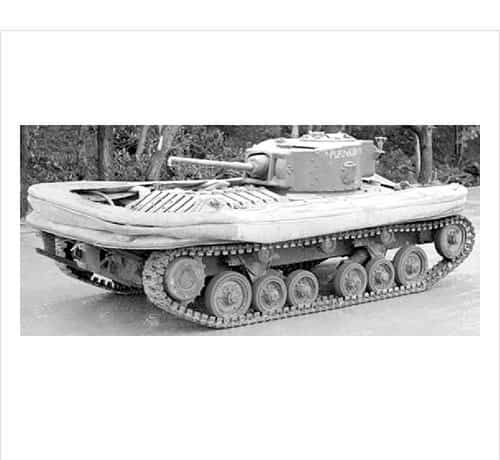The Valentine was extensively used in the North African Campaign, earning a reputation as a reliable and well-protected vehicle. The first Valentines went into action in Operation Crusader in the North African desert, when it began to replace the Matilda Tank.
Due to a lack of cruisers, it was issued to armoured regiments in the UK from mid-1941.
Although never fully equipping any of our preceding regiments, small numbers of Valentines were issued to the 4th Hussars in summer 1942.
The Valentine was better armed and faster than the Cruiser Mk II. During the pursuit from El Alamein in late 1942, some tanks had driven more than 3,000 miles (4,800 km) by the time the Eighth Army reached Tunisia.
The Valentine shared the common weakness of the British tanks of the period, its 2-pounder gun lacked high-explosive (anti-personnel) ammunition and soon became outdated as an anti-tank weapon.
The introduction of the 6-pounder in British service was delayed until the loss of equipment in France had been made good, so the 2-pounder was retained longer. The small size of the turret and of the turret ring meant that producing mountings for larger guns proved a difficult task.
Although versions with the 6-pounder and then with the Ordnance QF 75 mm gun were developed, by the time they were available in significant numbers, better tanks had reached the battlefield. Another weakness was the small crew compartment and the two-man turret.
A larger turret, with a loader position added, was used in some of the 2-pounder versions but the position had to be removed again in variants with larger guns. Its relatively low height was an advantage on a battlefield with little cover, allowing it to take up a “good hull-down position in any convenient fold in the ground”.
By 1944, the Valentine had been almost replaced in front-line units of the European theatre by the Churchill, Cromwell’s and the US-made M4 Sherman tank. A few were used for special purposes or as command vehicles for units equipped with the Archer self-propelled gun.
With the forthcoming invasion of Europe, an amphibious version was developed and pressed into service. It was deemed that the Sherman DD tank would be better suited for the invasion of Normandy and the Valentine DDs were sent to Italy where the 3rd and 7th would train on them.
The Spring of 1945 would see the 7th Hussars using a mixed fleet of Sherman’s and Valentines to cross the northern rivers of Italy.
The Royal artillery used the Valentine XI (with 75 mm gun) as an OP command tank until the end of the war.


